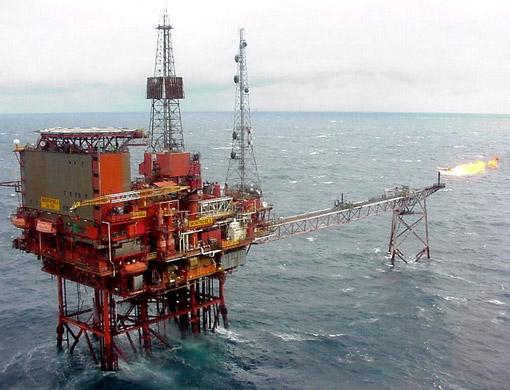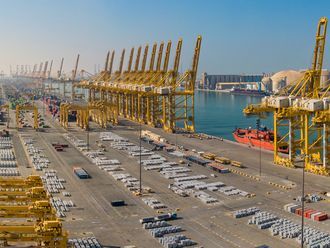
Singapore: After years of often explosive growth, fuel consumption in Asia’s biggest economies is stuttering, undermining efforts led by the Organisation of the Petroleum Exporting Countries (Opec) to end a global supply glut and lift prices.
Gobbling up over a third of global supplies, Asia is the world’s biggest and fastest growing region for oil consumption, and its seemingly insatiable fuel thirst has long been a core support for prices.
Now, some say that picture of buoyant growth in demand is crumbling.
“The signs of growing demand aren’t quite what they seem. Chinese fuel growth is at a three year low, Japanese fuel demand is down,” said Matt Stanley, a fuel broker at Freight Investor Services (FIS) in Dubai. “Considering the sheer volume of product available ... sooner or later I think we could see some distressed sellers.” Brent crude oil futures have risen by around 5.5 per cent this month to $55.75 (Dh204.60) per barrel as traders bet on a broader commodity market recovery and price in a Middle East risk premium after the US missile attack on Syria last week.
But in a sign that there remains an abundance of oil available to buyers and that the more opaque physical oil market is not as convinced by the rally in financial markets, top exporter Saudi Arabia this month lowered the price for its May crude for Asian customers by 30 cents versus April, and to a discount of 45 cents compared with the benchmark Oman/Dubai average.
It is showing up in various parts of the region’s economy.
China’s gasoline exports in February climbed to their second-highest monthly level on record as refiners increasingly turned to exports to Asian markets to drain a domestic supply glut that almost wiped out imports altogether.
Even India, which is often touted as the next driver of global demand growth, fuel consumption fell 0.6 per cent in March from a year earlier.
“The stutter in Indian demand may have been caused due to the effects of demonetisation,” said Sukrit Vijayakar, director of energy consultancy Trifecta.
With little notice, India abolished the then existing 500 and 1,000 rupee notes late last year, which made up the bulk of the country’s cash in circulation. That crimped consumption, affecting many consumers and disrupting many businesses.
And while India’s annual fuel demand is still expected to grow this year, analysts say, it is unlikely to recover enough to fully offset the demonetisation impact.
M. K. Surana, chairman of Hindustan Petroleum Corp, said he expects India’s fuel demand to rise by 5.5 to 6 per cent this year. Though that is still a high growth rate by global standards, it is a far cry from 2016’s refined product demand growth of more than 10.9 per cent.
Falling population
Consumption in other major Asian oil buyers is in terminal decline.
Countries like Japan and South Korea face major demographic problems because of low birth rates and an ageing population. A Japanese government agency this week forecast that the nation’s population will fall nearly a third by 2065. Add in improving fuel efficiency and the longer-term picture for oil producers trying to sell to Japan appears to be bleak.
“Because of structural factors such as the improvement of vehicle fuel economy, domestic demand has been weakening ... and that is continuing,” said a spokesman for JXTG Nippon Oil & Energy Corp, which has a 50 per cent share of Japanese gasoline sales.
Japan’s oil demand is expected to fall by more than 1.5 per cent per year on average over the next five years, forecasts by the government’s energy committee show.
In South Korea, oil products demand fell by 0.4 per cent in January-February from a year earlier, according to data from Korea National Oil Corp.
“This year’s overall domestic oil products demand growth is expected to slow,” said Lee Seung-moon, a research fellow at the state-run Korea Energy Economic Institute.
The longer-term trend in South Korea is similar to that in Japan, as rising efficiency, alternative fuels, and an ageing population take their toll on oil demand.
No end to glut?
With demand faltering in Asia’s four biggest oil consuming countries, efforts led by Opec and Russia to cut output by 1.8 million bpd during the first half of the year to rein in a global fuel supply overhang could be undermined, resulting in calls by Saudi Arabia to extend the cuts into the second half of 2017.
Goldman Sachs said in a note to clients on Wednesday that its long-term forecast for benchmark US crude is $50 per barrel versus the current price of $53.08 per barrel.
Data from Thomson Reuters Eikon shows that global oil supplies on average exceeded demand by 680,000 bpd in 2016, and that 2017 will still see oversupply, albeit of less than 100,000 bpd, excluding stored oil.
Still, lots of fuel remains stored on tankers in Asia’s oil trading hub around Singapore. Eikon data shows that around 20 supertankers are currently sitting offshore Singapore and southern Malaysia, filled with oil.
While this figure is slightly lower than a month ago, it is a sign of continuing oversupply.
Keeping oil on tankers is only profitable if fuel prices for future delivery are significantly higher than those for imminent discharge.
Yet the forward price curve for Brent crude futures, the international benchmark for oil prices, shows only a slight increase of 90 cents in prices between now and a peak in November, at $57.20 per barrel.
“That’s not enough to make it profitable to store oil on tankers,” one ship broker said on condition of anonymity.
What’s worse, Brent prices start falling from November onward, back towards $56 a barrel for delivery towards the end of 2018 and into 2019.
Such a price curve, “makes it commercial suicide to store oil on tankers, so the only reason to do that is if you have nowhere else to put it,” the broker added.











